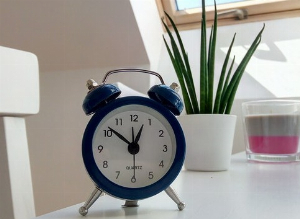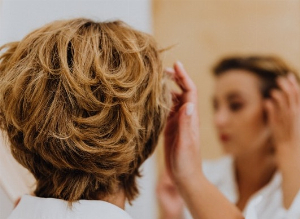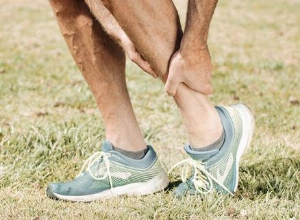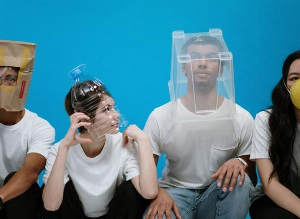Light therapy: What is it and how can it benefit our health?
Published 18 Nov 2021 • By Courtney Johnson
We’ve all experienced that feeling of “winter blues” as the seasons transition from fall to winter. And for some people, these “blues” may be even more severe, in the form of major depressive disorder with seasonal patterns. Light therapy is often prescribed to treat seasonal depression, but did you know that it can be effective in treating other health conditions?
So, what is light therapy exactly? When is it prescribed? What conditions does it treat?
We explain it all in our article!
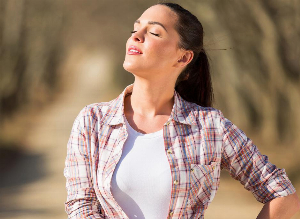
What is light therapy?
Light therapy, also called phototherapy or heliotherapy, is a medical treatment using natural or artificial light to treat a health condition.
Light therapy has been used to improve our health for centuries, with the earliest evidence dating back to ancient Egypt and India, where people used sunlight to treat conditions such as vitiligo.
Phototherapy in the modern age was developed by Danish-Faroese physician and scientist Niels Ryberg Finsen in the late 19th century. Motivated by his own diagnosis of Niemann-Pick disease, Finsen used sunlight and ultraviolet light (UV) to treat lupus vulgaris, a type of tuberculosis affecting the skin. His pioneering work led him to win the Nobel Prize in Physiology in 1903.
Today, light therapy has expanded to a variety of applications, using sunlight, halogen lights, fluorescent light bulbs, or light emitting diodes (LEDs). The type of therapy and type of light used depends on the condition.
What health conditions can light therapy treat and how?
When you think of light therapy, seasonal affective disorder (SAD) may first come to mind. But, in fact, light therapy is used to treat a number of conditions.
These may include:
Mood and sleep disorders
Major depressive disorder (MDD) with seasonal patterns
Phototherapy is most commonly used to treat seasonal affective disorder, which is now referred to as major depressive disorder (MDD) with seasonal patterns. This is a type of depression that occurs during a particular time of year, typically in the winter months where there is less sunlight.
Light therapy for MDD with seasonal patterns uses a lightbox, or a specially designed box that lets off continuous soft light in the range of 2,500-10,000 lux (a lux is a measurement of light brightness).
Research has proposed a few theories as to why light therapy is effective on depression, such as:
- It affects the biological clock by balancing the brain’s circadian rhythm (the body’s 24-hour clock)
- It contributes to stable, consistent sleep patterns
- It increases alertness
- It balances the activation of serotonin in the brain, an important player in regulating mood
Treatment is typically prescribed in the fall through early spring, and usual bright light therapy starts with 30-minute morning sessions with 10,000 lux, though this may vary depending on the patient. The more powerful the lightbox, the shorter the session will be.
Light therapy is also being explored for other types of depression, but researchers are not yet in agreement over its effectiveness.
Sleep disorders
As mentioned above, light therapy has been found to impact our body’s inner clock that regulates our waking and sleeping cycles. Sometimes this circadian rhythm is disrupted and needs to be reset.
Phototherapy can be prescribed in people who have circadian rhythm sleep disorders like delayed sleep phase syndrome (DSPS). Patients with DSPS, as its name implies, have their sleeping phases delayed hours beyond what is considered “normal,” meaning they often cannot fall asleep until very late at night or close to sunrise. Light therapy can help re-regulate their sleep schedule to more normal sleeping hours.
Skin conditions
Light therapy can also be used to treat a number of skin conditions, especially those that have failed to respond to standard treatments or that are inflammatory in nature.
Conditions that are commonly treated with light therapy include:
- Vitiligo
- Psoriasis
- Eczema
- Itchy skin
- Cutaneous T-cell lymphoma (CTCL)
Phototherapy for skin conditions utilises UV light to slow inflammation and skin cell growth. There are three types of UV light therapy used for skin disorders:
- Broadband UVB light: this uses a wide range of UVB rays, which are present in sunlight.
- Narrowband UVB light: this uses a smaller range, high intensity UVB light, and is the most common type of light therapy.
- Psoralen UVA (PUVA): this uses psoralen, a compound coming from plants, that helps the body better absorb UVA. It can be applied to the skin or taken in pill-form. Because this form of phototherapy can cause a number of side effects, it is usually the last course after other treatments have failed.
Cancers and Precancers
For certain cancers and precancers, a type of light therapy, called photodynamic therapy, can be used.
Photodynamic therapy involves the use of a photosensitising drug in combination with light. Photosensitisers are applied to the skin, and when light comes in contact with the skin, it creates an interaction with the drug to produce a form of oxygen called an oxygen radical that kills cancer cells in the affected area.
This type of therapy can be used to treat:
- Endobronchial cancer (a type of lung cancer)
- Oesophageal cancer
- Barrett’s oesophagus (a precancerous complication of GERD)
Photodynamic therapy is sometimes also referred to as photoradiation therapy or photochemotherapy.
For new-borns
Light therapy has been used for decades to treat both jaundice and hyperbilirubinemia in new-born babies. These two conditions cause a baby’s eyes, skin, and tissues to turn yellow. This yellowing is caused by excess bilirubin, a pigment created by the breakdown of red blood cells (haemolysis).
Light effectively reduces bilirubin levels by breaking down the pigment so that the body can eliminate it properly.
Jaundice is typically treated by placing the baby under fluorescent lamps or halogen spotlights with his or her eyes protected. A newer version of this therapy utilizes “biliblankets,” or blankets with fibreoptic pads or LED lights that shine blue light onto the baby’s body.
Conclusion
As we’ve illustrated, light therapy can be a helpful tool for keeping us in good health. The door is still open to new applications; scientists are currently exploring the possibility of using phototherapy to treat hair loss and diabetic retinopathy.
It is important to note, however, that light therapy does have some risks. UV rays can be damaging to skin cells, causing premature aging, and potentially leading to skin cancer. Additionally, frequent sessions of light therapy can suppress the immune system, making the body more vulnerable to infection, diseases, and certain cancers.
Light therapy is also not advised in people who are pregnant or nursing, have liver disease, lupus, or a family history of skin cancer.
If you’re interested in phototherapy, make sure to reach out to your doctor. He or she can help you determine if it’s right for you.
Was this article helpful to you?
Give it a like and share your thoughts and questions with the community in the comments below!
Take care!
Sources:
- Light therapy, Mayo Clinic
- Seasonal affective disorder: bring on the light, Harvard Health Publishing
- Campbell, P. D., Miller, A. M., & Woesner, M. E. (2017). Bright Light Therapy: Seasonal Affective Disorder and Beyond. The Einstein journal of biology and medicine : EJBM, 32, E13–E25.
- Perera, S., Eisen, R., Bhatt, M., Bhatnagar, N., De Souza, R., Thabane, L., & Samaan, Z. (2016). Light therapy for non-seasonal depression: Systematic review and meta-analysis. BJPsych Open, 2(2), 116-126. doi:10.1192/bjpo.bp.115.001610
- How Does Light Therapy Treat Depression?, Healthline
- Photodynamic Therapy for Cancer, NIH National Cancer Institute
- An Overview of Phototherapy, Tolu Ajiboye, Very Well Health
- Phototherapy for Skin Disease, Cedars Sinai
- Delayed Sleep Phase Syndrome, Stanford Health Care
- Luminotherapy, Alternative Medicine College of Canada

 Facebook
Facebook Twitter
Twitter
